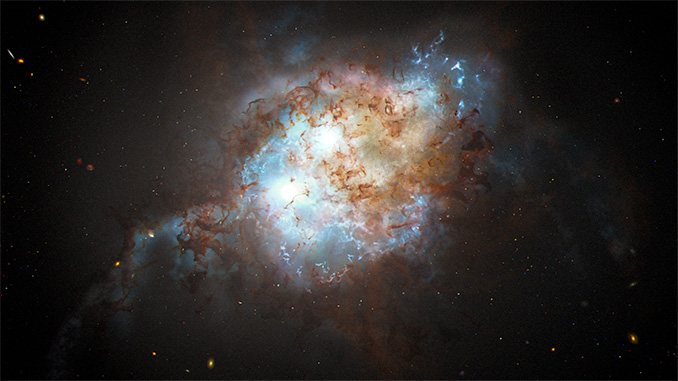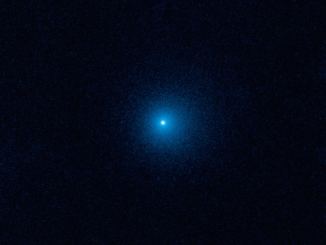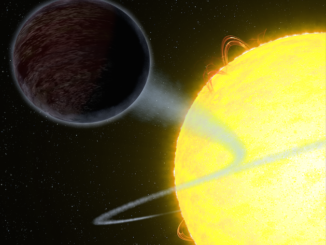
Astronomers using the Hubble Space Telescope, the Chandra X-ray Observatory, the European Space Agency’s Gaia and ground-based optical and radio telescopes have found a pair of galaxies, each one hosting a brilliant quasar, in the process of colliding 10 billion years ago.
Quasars are extremely active supermassive black holes emitting torrents of energy as they consume surrounding gas and dust. Finding a double quasar just 3 billion years after the Big Bang may shed light on how galaxies came together in the early universe to form ever larger structures. Not to mention how supermassive black holes grow through mergers.
“We don’t see a lot of double quasars at this early time in the universe. And that’s why this discovery is so exciting,” said graduate student Yu-Ching Chen of the University of Illinois at Urbana-Champaign, lead author of a study published in the journal Nature.
“Knowing about the progenitor population of black holes will eventually tell us about the emergence of supermassive black holes in the early universe, and how frequent those mergers could be,” he added.

To find such needles in such a vast haystack, astronomers had to use a combination of space- and ground-based observatories. Data from Gaia was used to identify the binary quasar candidate based on subtle changes in brightness. The W.M. Keck Observatory was used to to make sure astronomers were really seeing a binary quasar and not two gravitationally-lensed images of the same galaxy.
Other observatories provided insights across the electromagnetic spectrum.
“We’re starting to unveil this tip of the iceberg of the early binary quasar population,” said Xin Liu of the University of Illinois at Urbana-Champaign. “This is the uniqueness of this study. It is actually telling us that this population exists, and now we have a method to identify double quasars that are separated by less than the size of a single galaxy.”



